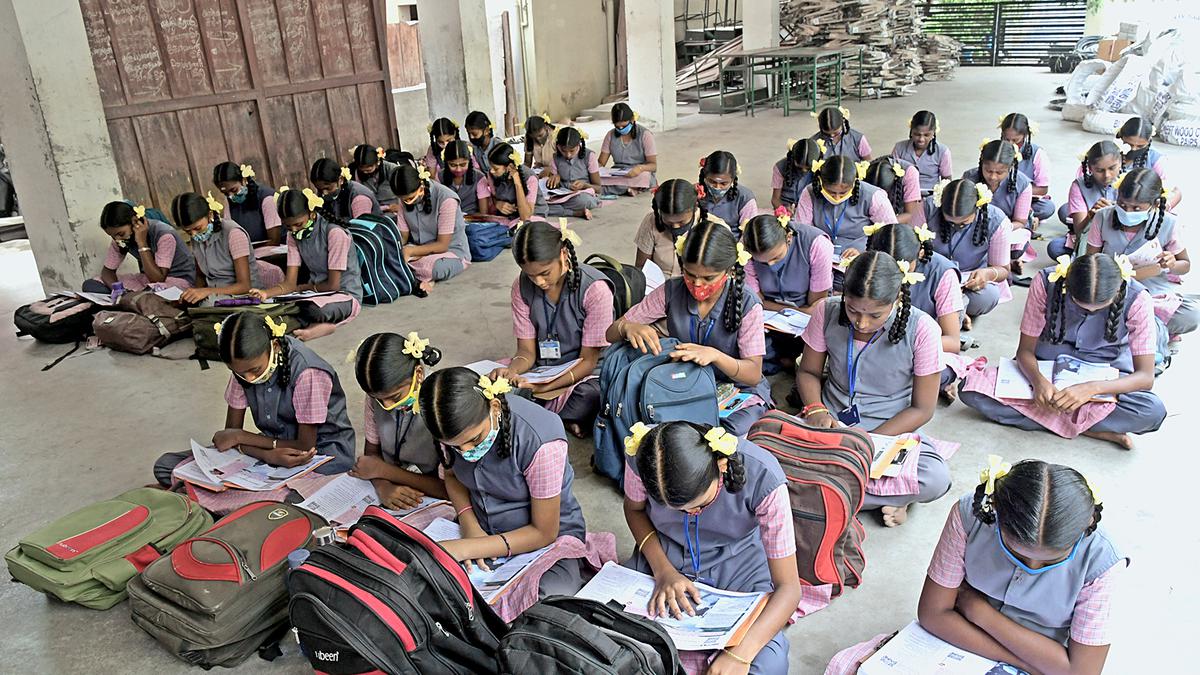
From poor infrastructure to inadequate classrooms, CAG finds major issues in govt. schools
The Hindu
Despite Tamil Nadu’s stellar performance in the Gross Enrolment Ratio at the all-India level, enrolment in government-run secondary and higher secondary schools declined by 14.76% and 11.84%, respectively, during 2016-21
Despite Tamil Nadu’s stellar performance in the Gross Enrolment Ratio at the all-India level, enrolment in government-run secondary and higher secondary schools declined by 14.76% and 11.84%, respectively, during 2016-21, even as private schools were attracting more students. This is according to the CAG’s report on the functioning of government secondary and higher secondary educational institutions.
Addressing the media on Friday, C. Nedunchezhian, Principal Accountant General (Audit-I), Tamil Nadu, said that among the 108 government schools sampled, the audit observed a 44% shortage of classrooms in 48 schools. There was a total shortage of 227 classrooms, leading to classes being conducted in the open, under the shade of trees, in laboratory buildings or in makeshift classrooms. The quality of the buildings was not up to the mark.
For instance, in Ramanathapuram, civic works at Government High School, M. Nedungulam, were undertaken under the Rashtriya Madhyamik Shiksha Abhiyan (RMSA) during 2017-18, and completed (in July 2018) at a cost of ₹1.60 crore. During a joint physical verification, the audit found that the quality of the construction was very poor. The headmaster of the school had reported (in November 2021) the status of the building to the CEO, Ramanathapuram, who in turn communicated this to the Executive Engineer, Ramanathapuram. No action was taken. This resulted in classes being conducted in unsafe environments.
As of March 2022, out of a total of 5,572 Government High Schools/Government Higher Secondary Schools in Tamil Nadu, 898 (16%) did not have a playground, and 780 did not have any alternative arrangements for children to play outdoor games. In the 108 Government High Schools/Government Higher Secondary Schools sampled, 29 (27%) did not have a playground. It was also observed that eight out of 29 schools without playgrounds had a post of Physical Education Teacher (PET), despite 79 Government High Schools/Government Higher Secondary Schools with playgrounds not having PETs. Non-availability of playgrounds, coupled with irrational distribution of PETs, had resulted in an inadequate concentration on the overall development of children.
The shortfall in sanctioned posts and vacancies against sanctioned posts due to delay in recruitment resulted in an insufficient number of teachers in government schools. The total shortfall against the normative requirement was estimated to be 31,490 posts. The report noted that as of March 2021, 2,133 habitations did not have a high school within a five-kilometre radius. Similarly, 1,926 habitations did not have a higher secondary school within an eight-kilometre radius.
The National Education Policy envisaged increasing public spending on education to 6% of GDP. But inadequate budgetary prioritisation by the government resulted in the State’s expenditure on secondary and higher secondary education declining from 0.94% of GSDP in 2016-17 to 0.85% in 2020-21.

 Run 3 Space | Play Space Running Game
Run 3 Space | Play Space Running Game Traffic Jam 3D | Online Racing Game
Traffic Jam 3D | Online Racing Game Duck Hunt | Play Old Classic Game
Duck Hunt | Play Old Classic Game











